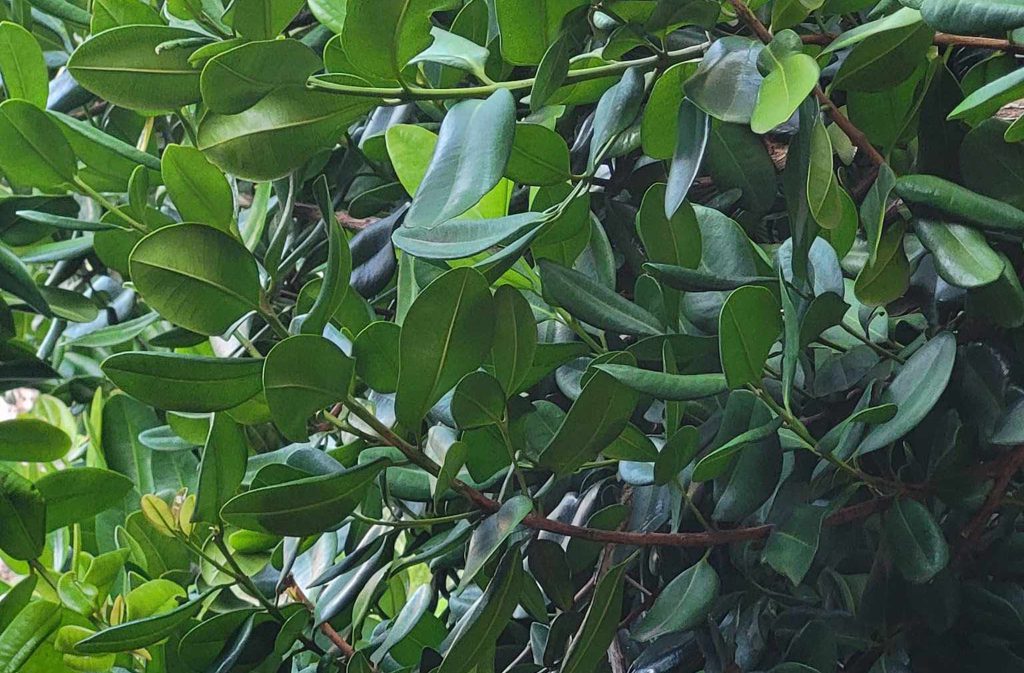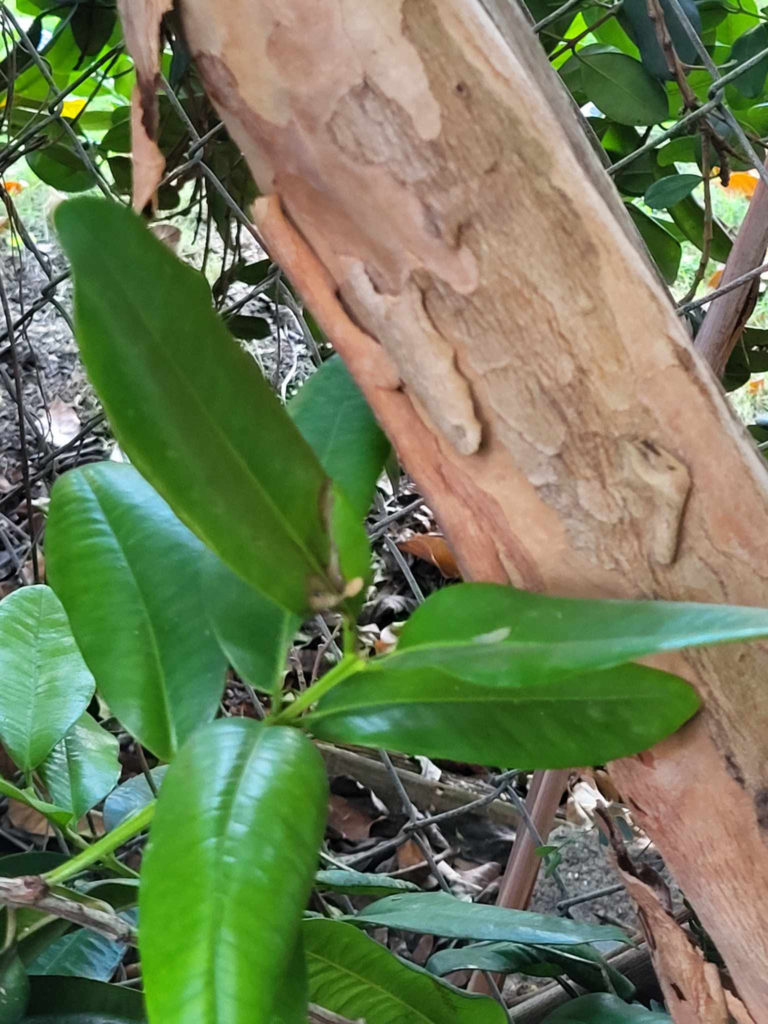Scientific name: Pimenta racemosa
Common names: West Indian bay tree, Bay rum tree, Bay tree, Bay rum berry, Bay berry, Pimento tree, Wild clove
The Bay Rum tree, more properly West Indian bay tree, Pimenta racemosa, is a plant species in the Myrtaceae, the myrtle family, native to the Caribbean region. It is utilized in culinary applications, and its essential oil is distilled to create a fragrant cologne known as bay rum. Despite its resemblance to alcoholic beverages, the concentrated essential oil derived from the fruit is toxic, making the product unsuitable for consumption. The leaves of this plant are also employed in herbal teas.
All images on this page were provided by ©2024 Theresa Maria Frorup-Alie and used with permission.
The history of Bay Rum dates back to the colonial era when sailors and merchants traversed the Caribbean seas. It is said that sailors, inspired by the aromatic bay leaves found in the region, began concocting fragrant potions by infusing rum with bay leaves and other spices. This blend served not only as a delightful fragrance but also as a tonic for tired muscles and a remedy for various ailments. Albert Heinrich Riise (11 September 1810 – 18 October 1882), was a Danish pharmacist, merchant, and rum manufacturer on Saint Thomas. He became intrigued by this local remedy and found that blending bay leaf oils with fine Virgin Island rums produced a remarkable fragrance. His innovative creation received the Centennial Medal in 1876, along with accolades in New Orleans and Chicago.
According to the St John Historical Society, “There are two methods for making bay rum. One way is to mix the bay oil with rum or with alcohol and water and then distill it. Another way is to distill the leaves directly into the alcohol instead of first extracting the bay oil. From the latter method, the product obtained is considered to be superior in aroma and strength. From one quart of the oil a lot of bay rum can be made, depending on the strength to which it is distilled.”
Medicinal uses:
Bay Rum is believed to have various therapeutic benefits, including muscle relaxation, stress relief, and mood enhancement. It is often used in aromatherapy and massage oils for its calming and uplifting effects. Various extracts from different types of Pimenta racemosa exhibit anti-inflammatory properties, attributed in part to terpenes like abietic acid and lupeol, which influence the migration of neutrophils to inflamed areas. Furthermore, Pimenta racemosa showcases antinociceptive characteristics and has been traditionally used as an analgesic in the Caribbean.



